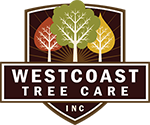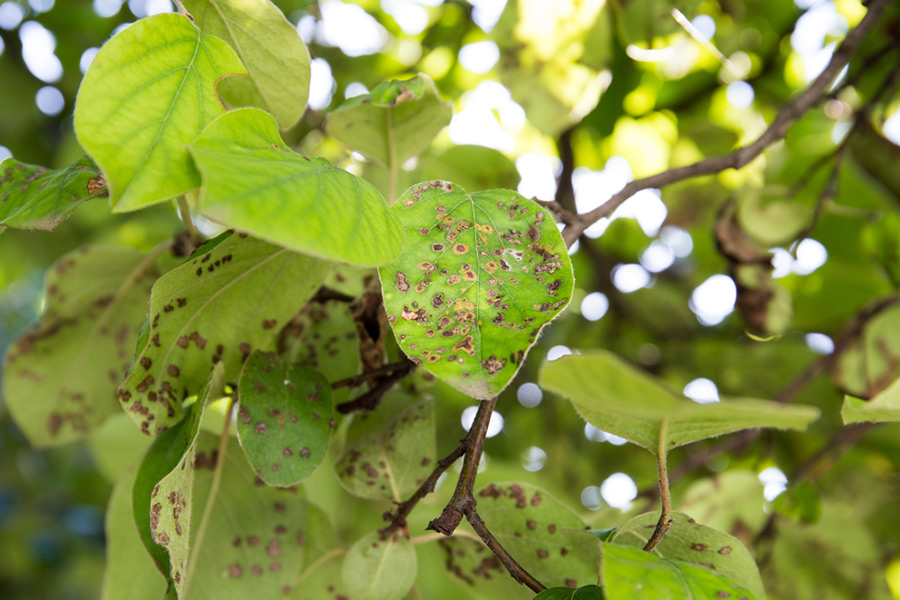The leaves are starting to turn yellow and red, the days are getting shorter, and the weather is getting cooler. This can only mean one thing: fall is here! Along with the changing of the seasons comes a new set of pests and diseases that can affect your trees. That’s why our certified arborist would like to discuss some of the most common tree diseases that occur in the fall. We will also provide some Hillsboro tree care tips on how to prevent these diseases from affecting your trees.
Why is It Important to Inspect Trees for Diseases?
It is important to inspect your trees for diseases in the fall as many common pests and diseases can cause serious damage if left untreated. These pests and diseases can also spread quickly, potentially impacting multiple trees in a short amount of time. Early detection is key when it comes to combating tree diseases, so make sure to take regular inspections seriously.
Verticillium Wilt
Verticillium wilt is a fungal disease caused by a soil-borne pathogen. The fungus affects the vascular system of the tree, causing it to slowly starve for nutrients and water. Symptoms of verticillium wilt include yellowing leaves, premature leaf drop, branch dieback, and sudden wilting of foliage.
To prevent this disease from infecting your trees, make sure that you are planting them in well-drained soils with plenty of organic matter. You should also avoid any areas that have been previously infested with the fungus.
Oak Wilt
Oak wilt is caused by another soil-borne fungus known as Ceratocystis fagacearum. This disease can quickly spread through the roots of oak trees, resulting in yellowing and wilting of leaves. The fungus can also cause premature leaf drop, branch dieback, and stunted growth.
To prevent this disease from affecting your trees, you should avoid planting new oaks near infected ones. Additionally, make sure to keep branches pruned away from other oaks and avoid wounding any parts of the tree during construction or landscaping work.
Anthracnose Disease
Anthracnose is a common fungal disease that affects many different types of trees. This disease causes dark spots on the foliage and premature leaf drop. In extreme cases, it can result in significant defoliation and branch dieback as well. To prevent anthracnose from infecting your trees, make sure to water them deeply and avoid wetting their foliage.
What Should You Do if Your Tree is Infected?
If you think that your tree is infected with any of the diseases mentioned above, it is important to contact a Hillsboro tree care specialist. At Westcoast Tree Care, we can diagnose the problem and provide solutions for treating the disease. Additionally, we can also provide advice on how to prevent future infections.
Should You Cut Down an Infected Tree?
In some cases, removing an infected tree may be the only option. However, it is important to weigh your options carefully, as cutting down a tree can have serious consequences for the entire environment. If you do decide to remove an infected tree, make sure to consult with a Hillsboro tree care specialist beforehand. At Westcoast Tree Care, we can help ensure that the job is done safely and correctly.
What are Some Ways to Prevent Tree Diseases?
The best way to prevent tree diseases is to make sure that your trees are healthy and well-maintained. This means watering them regularly, keeping up with pruning and fertilization, and monitoring for pests or signs of disease. Additionally, make sure to inspect your trees on a regular basis so that you can catch any early signs of disease before it becomes an issue.
Does Mulching Help Prevent Tree Diseases?
Mulching is a great way to keep your trees healthy and protect them from disease. Mulch helps retain moisture in the soil, which is essential for preventing certain fungal diseases and other pests. Additionally, it also helps improve the nutrient content of the soil, providing extra nourishment for your trees.
Hillsboro Tree Care
At Westcoast Tree Care, we specialize in providing Hillsboro tree care and maintenance services. Our team of certified arborists can inspect your trees for disease and provide advice on how to prevent them from occurring in the future. Contact us by filling out our online form or give us a call at 1.800.767.8733 for a no-cost, no-obligation quote.








